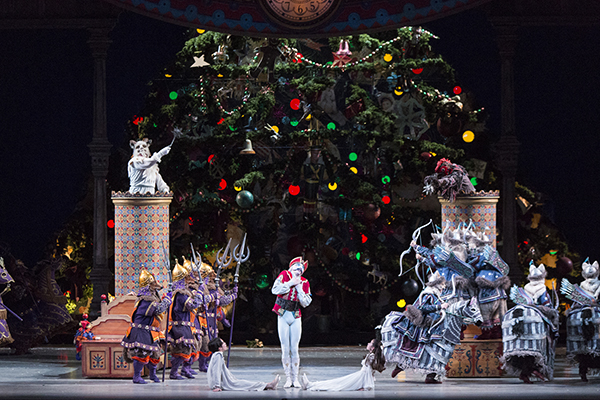Ballet
News+
The Nutcracker and its Evergreen Appeal
by Paula Citron
December 6, 2018

It is a good thing that Alexandre Dumas’ Histoire d’un casse-noisette (1844) inspired Prince Ivan Vsevolozhsky, director of the Russian Imperial Theatres, or we would not have the beloved ballet The Nutcracker that we so enjoy today.
Dumas’ benign story is a sanitized translation of the original fairy tale, The Nutcracker and the Mouse King (1816), by the German Romantic author E.T.A. Hoffmann, famous purveyor of gothic horror. The original story is downright scary – a psychological, erotically ambiguous tale where “the fantasies of childhood blend with the dark side of the unconscious” (Mario Pasi).
Vsevolozhsky was attracted to The Nutcracker story because he wanted to create another ballet-féerie to capitalize on the success of The Sleeping Beauty (1890). He wrote the scenario with choreographer Marius Petipa and commissioned Pyotr Ilyich Tchaikovsky to compose the score. When Petipa became ill, he handed his detailed plans over to his assistant Lev Ivanov. The Nutcracker, which premiered at the Mariinsky Theatre, St. Petersburg in 1892, was always meant to be a ballet of sunny ways.
It was Nicholas Sergeyev who brought the ballet to the west. He had been the régisseur of the Mariinsky Theatre and had in his possession detailed choreographic notes of the Petipa/Ivanov version of The Nutcracker. Sergeyev set the work on the Vic-Wells Ballet (now The Royal Ballet) in 1934. The first full-length performance in North America was choreographed by William Christensen in 1944 for San Francisco Ballet but it was the success of George Balanchine’s 1954 version for New York City Ballet that clearly stamped The Nutcracker as an annual Christmas tradition. Other companies followed suit (including The National Ballet of Canada in 1964) and, particularly in North America, The Nutcracker became, along with Handel’s Messiah, the preeminent holiday entertainment fare.
There are many reasons why The Nutcracker is so popular. The scenario presents a child’s dreamworld – the excitement of Christmas Eve in the first scene and the fantastic journey that follows. The ballet is filled with choreographic imagination and special effects that delight the eye – the opening party scene, the Christmas tree that grows to gigantic proportions, the battle between the toy soldiers and the mice, a journey through the changing of the seasons, the colourful second act divertissements and of course the splendour of the classical pas de deux.
Many young dancers who take lessons yearn to be ballerinas and the tutu sequences in The Nutcracker gild the lily, particularly the Sugar Plum Fairy. It was Boris Romanov’s 1936 staging for Ballets de Monte Carlo that introduced the Snow Queen, allowing for a second tutu role. In the original production, the Snowflakes scene was danced by a 59-member female Corps de Ballet! Children love to see other children on stage and most Nutcrackers follow this practice established in the original 1892 ballet that featured young dancers from the Imperial Theatre School.
Finally, let us not forget Tchaikovsky’s inspired score, which has been called “a symphony of childhood” (Boris Asafiev). Long before the ballet crossed the Atlantic, The Nutcracker music was popular in the form of a concert suite. That music became even more well-known when Walt Disney used the Casse-Noisette Suite in his famous 1940 animated film Fantasia. The Nutcracker ballet became the visual image that made Tchaikovsky’s beloved music live and breathe.
The Nutcracker is onstage December 12, 2019 – January 4, 2020.